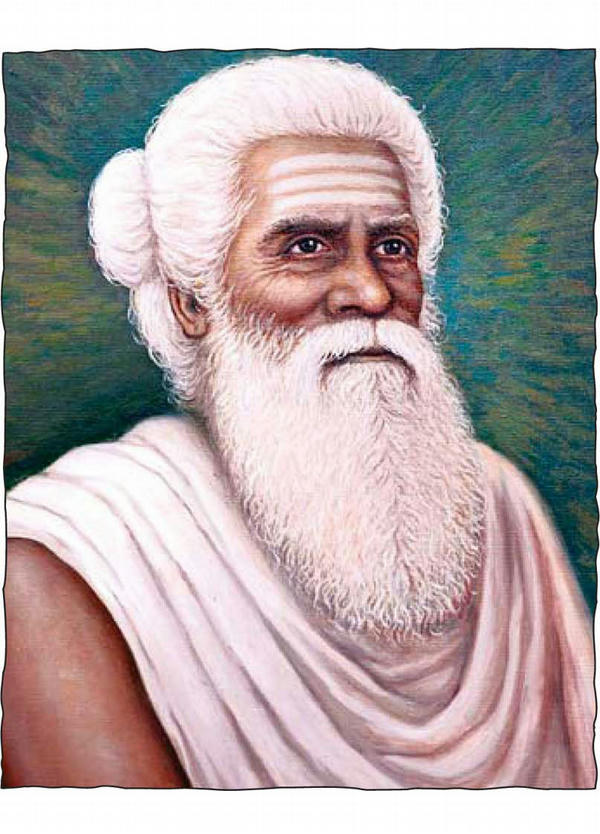7. Yogaswami Aslesha Puja Sadhana
Attend Yogaswami’s aslesha arati in the Guru Peedam. During the final arati, strive to feel Yogaswami’s presence in the room blessing you. If there is no Yogaswami ceremony scheduled for the Guru Peedam, feel Yogaswami’s presence after the final arati to Nataraja at the 9am Śiva puja in Kadavul Temple. §
After a guru’s maha samadhi (passing), he or she is honored each month on the nakshatra day of the maha samadhi. The nakshatra for Yogaswami’s maha samadhi is aslesha. §
Quote from Gurudeva§
(In the moment of darshan), the sense of separation is transcended, so there is a oneness between seer and seen. This is monistic theism, this is Advaita Isvaravada. Each is seeing the other and momentarily being the other. §
Supplementary Reading§
Dancing with Śiva, Lexicon§
Padapuja is the ceremonial worship of the guru’s sandals or holy feet, often through ablution with precious substances and offering of fruit and flowers. After the ceremony, the water of the bath, the fruit and other precious substances are partaken of as prasada by the devotees. §

Sri paduka refers to the sandals of the preceptor, the traditional icon of the guru, representing his venerable feet and worshiped as the source of grace.§
The feet of God, a God, satguru or any holy person, often represented by sacred sandals, called sri paduka in Sanskrit and tiruvadi in Tamil. The feet of a divine one are considered especially precious as they represent the point of contact of the Divine and the physical, and are thus revered as the source of grace. The guru’s sandals or his feet are the object of worship on his jayanti (birthday), on Guru Purnima and other special occasions.§
Additional Resources §
Dancing with Śiva, Maṇḍala 31: Kailasa Parampara§
Merging with Śiva, Chapter 44: Darshan, Grace of the Guru§

